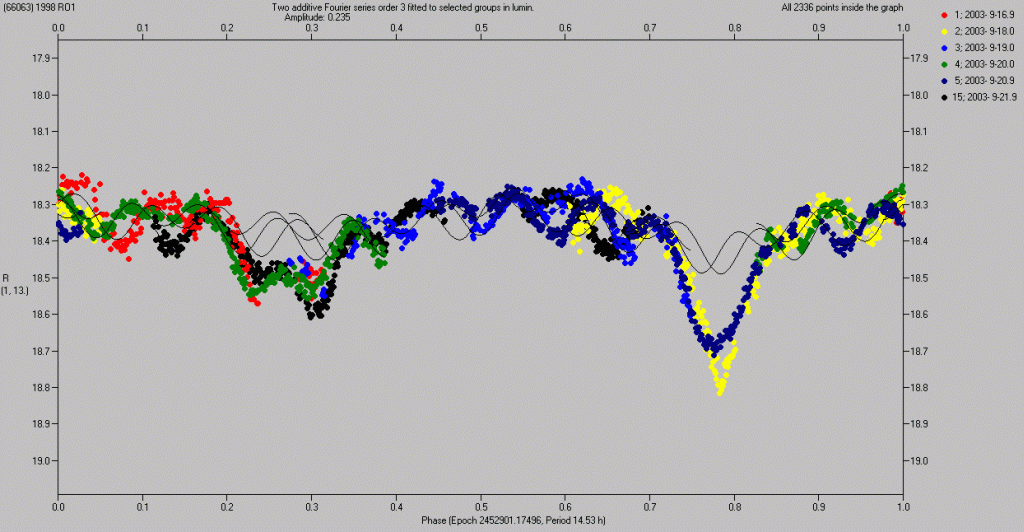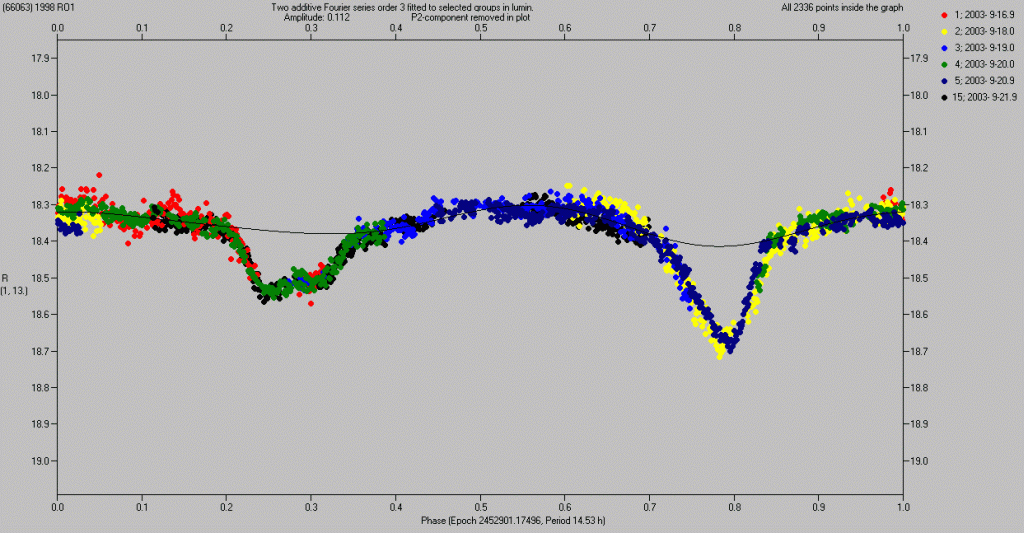Amplitude of the primary's rotation lightcurve: 0.12 mag. It indicates that the primary's shape is slightly elongated with equatorial axes ratio about 1.1 (assuming we had an equator-on aspect).
Orbital period (synodic): 14.53 +/- 0.01 h
The secondary-to-primary mean diameter ratio lower limit is 0.5. The small variation seen at the bottom "plate" of the long-period component's secondary attenuation event (between orbital phases 0.2 and 0.3 in the figure below) in the best nightly lightcurves indicates that the occultation/eclipse events were not quite total, so a true size of the secondary may be greater than that derived from the depth of the secondary attenuation event.
Amplitude of the long-period lightcurve component outside the eclipse minima: 0.11 mag. It is interpreted as being caused by a synchronous rotation of the secondary that is somewhat elongated (axes ratio estimated ~1.5). The secondary showed a maximum brightness at times about in the middle between the occultation/eclipse events, at the mean anomaly about 90/270 deg. (I define the mean anomaly to be 0/180 deg at the times of the occultation/eclipse events.) So, the secondary's long axis is approximately aligned with the primary-secondary vector.
Semi-major axis of the mutual orbit - 1.7 primary diameters, assuming primary's bulk density of 2 g/cm3.
Eccentricity - small; to be constrained later on.
Absolute R magnitude (H_R): 17.6 +/- 0.1
The estimated parameters of the binary system are strikingly
similar to parameters of other known
binary NEAs.


Check of the 2002 data with the periods derived above shows a consistency despite
the poor orbital phase coverage of the 2002 data, see
here.
Back to the Ondrejov NEO program page.